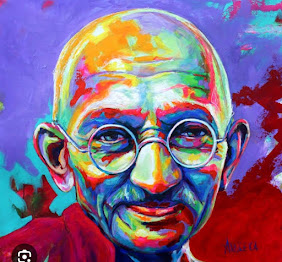The History of Ramzan (Ramadan) ரம்ஜான் (ரமலான்) வரலாறு ரமலான் அதன் வரலாறும், முக்கியத்துவமும் – சிறப்பு கட்டுரை
The History of Ramzan (Ramadan)
Introduction
Ramzan, also known as Ramadan, is the ninth month of the Islamic lunar calendar and is observed by Muslims worldwide as a month of fasting, prayer, reflection, and community. It is considered one of the Five Pillars of Islam and is a time of deep spiritual significance. This article delves into the historical background of Ramzan, its origins, and how its observance has evolved over time.
Origins of Ramzan
The practice of fasting during Ramzan dates back to the early days of Islam in the 7th century CE. According to Islamic tradition, in 610 CE, the Prophet Muhammad (peace be upon him) received the first revelations of the Quran from the Angel Jibreel (Gabriel) during the month of Ramzan. This event, known as Laylat al-Qadr (the Night of Power), is considered the holiest night in Islam and marks the beginning of divine guidance for humanity.
The commandment to fast during Ramzan was revealed in the second year of Hijra (migration) in 624 CE. The Quranic verse in Surah Al-Baqarah (2:183) states:
"O you who have believed, decreed upon you is fasting as it was decreed upon those before you that you may become righteous."
This verse establishes fasting as a spiritual practice meant to cultivate self-discipline, piety, and a closer connection to Allah.
Evolution of Ramzan
Practices Since its inception, the observance of Ramzan has remained consistent in its core elements, but cultural and regional variations have influenced its traditions. Initially, fasting practices were simpler, but over time, communities developed unique customs and rituals to enhance the experience of the holy month.
1. Early Islamic Period:
During the time of the Prophet Muhammad, fasting involved abstaining from food, drink, and sinful behavior from dawn until sunset. The pre-dawn meal (Suhoor) and the evening meal (Iftar) were basic and centered around dates and water, following the Sunnah (traditions) of the Prophet.
2. Medieval Islamic Era:
As Islam spread across different regions, local cultures influenced the way Ramzan was observed. In the Abbasid and Ottoman Empires, large communal iftars became common, and the tradition of Tarawih prayers (extra night prayers) gained prominence.
3. Modern Times:
Today, Ramzan is marked by vibrant cultural festivities, increased acts of charity, and the use of technology to facilitate religious observance. Digital Quran apps, online religious lectures, and social media campaigns have made it easier for Muslims worldwide to engage with the spiritual aspects of the month.
Key Components of Ramzan
1. Fasting (Sawm):
Muslims fast from dawn (Fajr) until sunset (Maghrib), refraining from eating, drinking, smoking, and marital relations. Fasting serves as a means of self-discipline and spiritual purification.
2. Prayer and Worship:
Increased prayer, recitation of the Quran, and attendance at the mosque are encouraged. The Tarawih prayers, performed at night, are a special feature of Ramzan.
3. Charity (Zakat and Sadaqah):
Giving to the poor and needy is emphasized during Ramzan. Many Muslims pay Zakat (mandatory almsgiving) and Sadaqah (voluntary charity) during this month.
4. Laylat al-Qadr:
The Night of Power, believed to fall within the last ten days of Ramzan, is considered a night of immense blessings and worship.
5. Eid al-Fitr:
The culmination of Ramzan is celebrated with Eid al-Fitr, a festival of breaking the fast, marked by communal prayers, feasting, and giving charity.
Conclusion
Ramzan holds profound historical and spiritual significance for Muslims worldwide. Its observance has remained a cornerstone of Islamic faith, fostering self-discipline, community bonding, and a deeper connection with Allah. As time progresses, new traditions and technologies continue to shape the way Ramzan is experienced, yet its essence remains unchanged: a month of devotion, reflection, and compassion.
I've created a detailed article on the history of Ramzan (Ramadan). Let me know
if you'd like any additions or modifications!
This Content Sponsored by Buymote Shopping app
BuyMote E-Shopping Application is One of the Online Shopping App
Now Available on Play Store & App Store (Buymote E-Shopping)
Click Below Link and Install Application: https://buymote.shop/links/0f5993744a9213079a6b53e8
Sponsor Content: #buymote #buymoteeshopping #buymoteonline #buymoteshopping #buymoteapplication"




Comments
Post a Comment